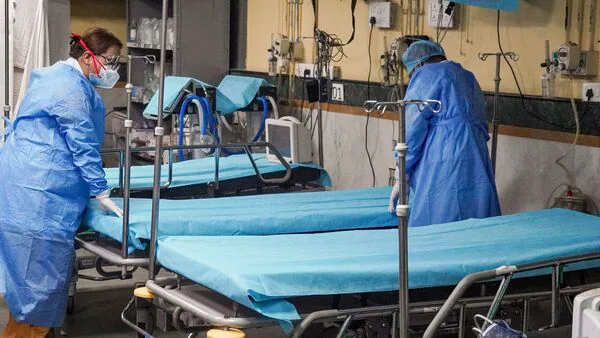
India Prepares Hospitals To Deal With Chemical Emergencies Such As Bhopal Gas Leak
New Delhi: Driven by the escalating risks of rapid industrial expansion, India is rolling out major new public health measures to combat chemical emergencies, which significantly enhance hospitals' response to local chemical threats and improve their capacity to manage a sudden surge of patients, according to officials and documents reviewed by Mint.
This module was jointly developed by the ministry of health and family welfare, the National Centre for Disease Control (NCDC), and the World Health Organization (WHO) India. The new national framework follows the International Health Regulations and introduces several new critical mandates for healthcare facilities.
The steps mentioned to ensure readiness at hospitals include conducting an annual Hazard, Risk, Vulnerability and Capability (HRVC) analysis to tailor the response to specified local chemical threats. This analysis ensures that hospitals stock essential medical supplies, such as life-saving drugs, antidotes, and ventilators, which will last for 48 to 72 hours.
Also Read | Hospitals Q2FY26 preview: Better patient mix to offset seasonal infectionFurthermore, hospitals must implement detailed Hospital Surge Capacity Planning to handle a sudden influx of patients and clearly mark zones as red, yellow, and green for efficient casualty management.
India's need for this system is underscored by its history of catastrophic chemical events such as the Bhopal Gas Tragedy in 1984, where a gas leak killed thousands, the LG Polymers Gas Lea in 2020 in Visakhapatnam, and the Vadodara Chemical Factory Fire in 2022.
These incidents, apart from significantly impacting human and animal health, have also affected the environment. India recorded 545 major chemical accidents between 2012 and 2022.
Queries sent to the health ministry spokesperson remained unanswered till press time.
Gaps remainIndia lacks a robust, dedicated mechanism to manage chemical disasters in terms of medical competency, lagging behind practices in countries like the US.
Dr. Sujeet Singh, former NCDC director, highlighted the gaps in the management of emergencies due to chemical agents, pointing out that despite over 3,000 chemicals being manufactured in India, a clear management system is missing. He emphasised the need for a framework that enables local government health officials to recognize signs and symptoms of chemical exposure in their areas. These new modules are crucial for focusing on hospital preparedness and community response, he said.
Also Read | To find workers, hospitals are training teenagThe new mandates move beyond general plans toward an integrated, chemical-specific system, significantly boosting hospital preparedness. Hospitals will have to maintain Specialized Emergency Medical Teams (EMTs) and have regular mock drills focusing on local chemical hazards.
Hospitals will need to ensure that staff are trained in hazard recognition, patient triage, and the proper use of personal protective equipment, in addition to knowing their emergency roles.
India's industrial growth poses risks of sudden, large-scale chemical emergencies, such as a major chemical spill resulting from a transportation accident, Dr. Rajeev Jayadevan, a public health expert and former president of the Indian Medical Association (IMA), Cochin chapter, said. "If local hospitals lack adequate preparation and supplies, it leads to poor care and dangerous delays in treatment. The shift in focus is from reactive to proactive."
He added that lessons from the pandemic highlighted the importance of effective crisis management, which relies on coordination across government, hospitals, media, and law enforcement.
Also Read | Hospital deals: PE firms pull back on aggressive bets, eye IPO windfall instThe module indicated that infrastructure now requires designating specific wards and intensive care units to prevent cross-contamination, establishing decontamination units, and creating specialized plans for safe chemical waste disposal.
Legal Disclaimer:
MENAFN provides the
information “as is” without warranty of any kind. We do not accept
any responsibility or liability for the accuracy, content, images,
videos, licenses, completeness, legality, or reliability of the information
contained in this article. If you have any complaints or copyright
issues related to this article, kindly contact the provider above.


















Comments
No comment